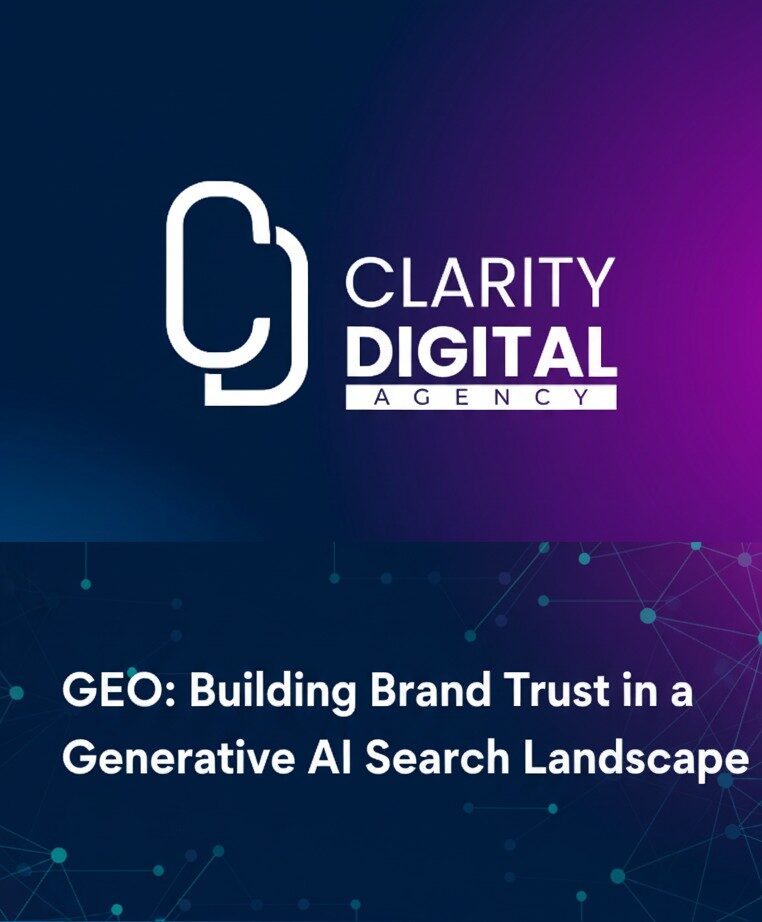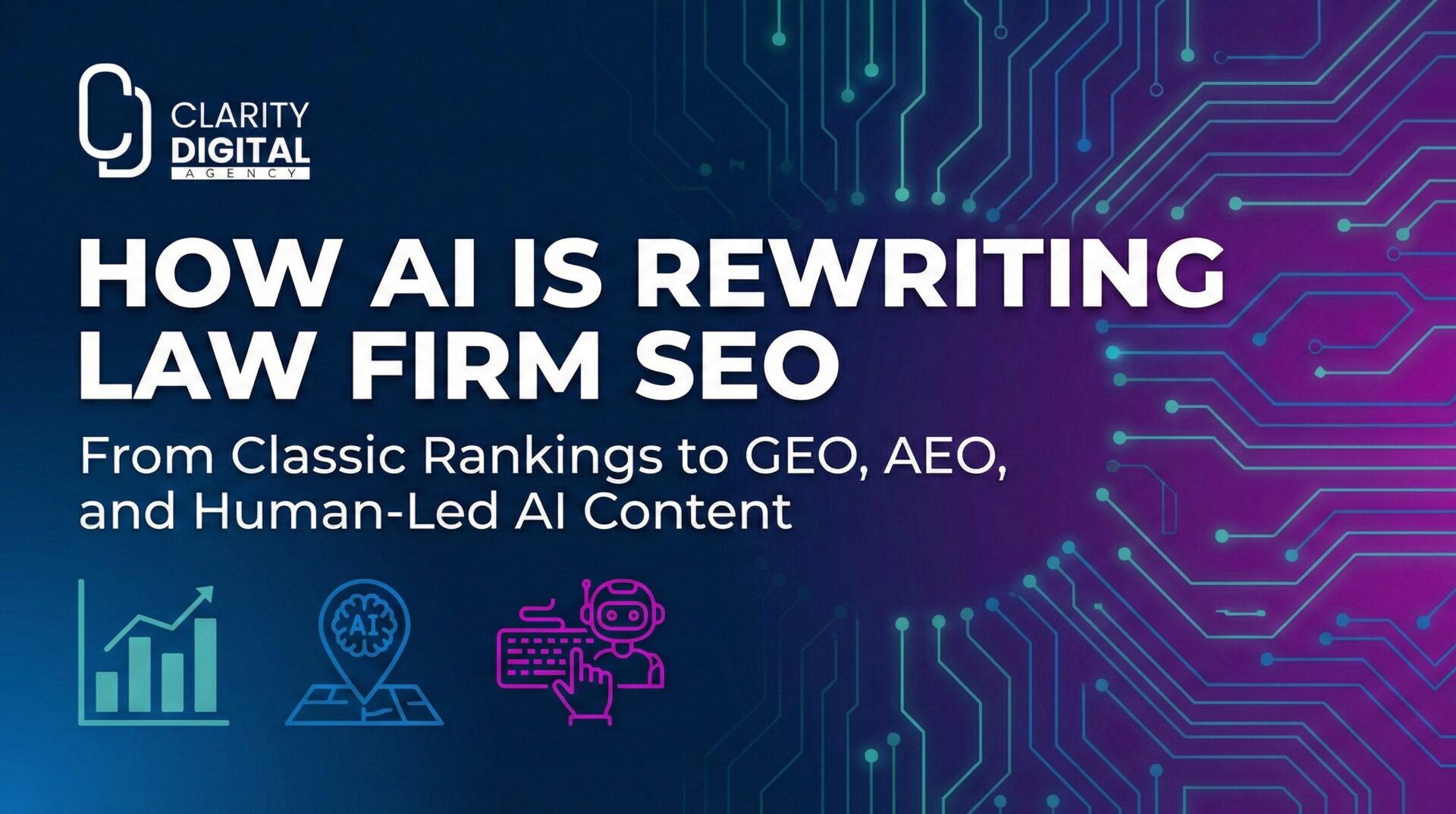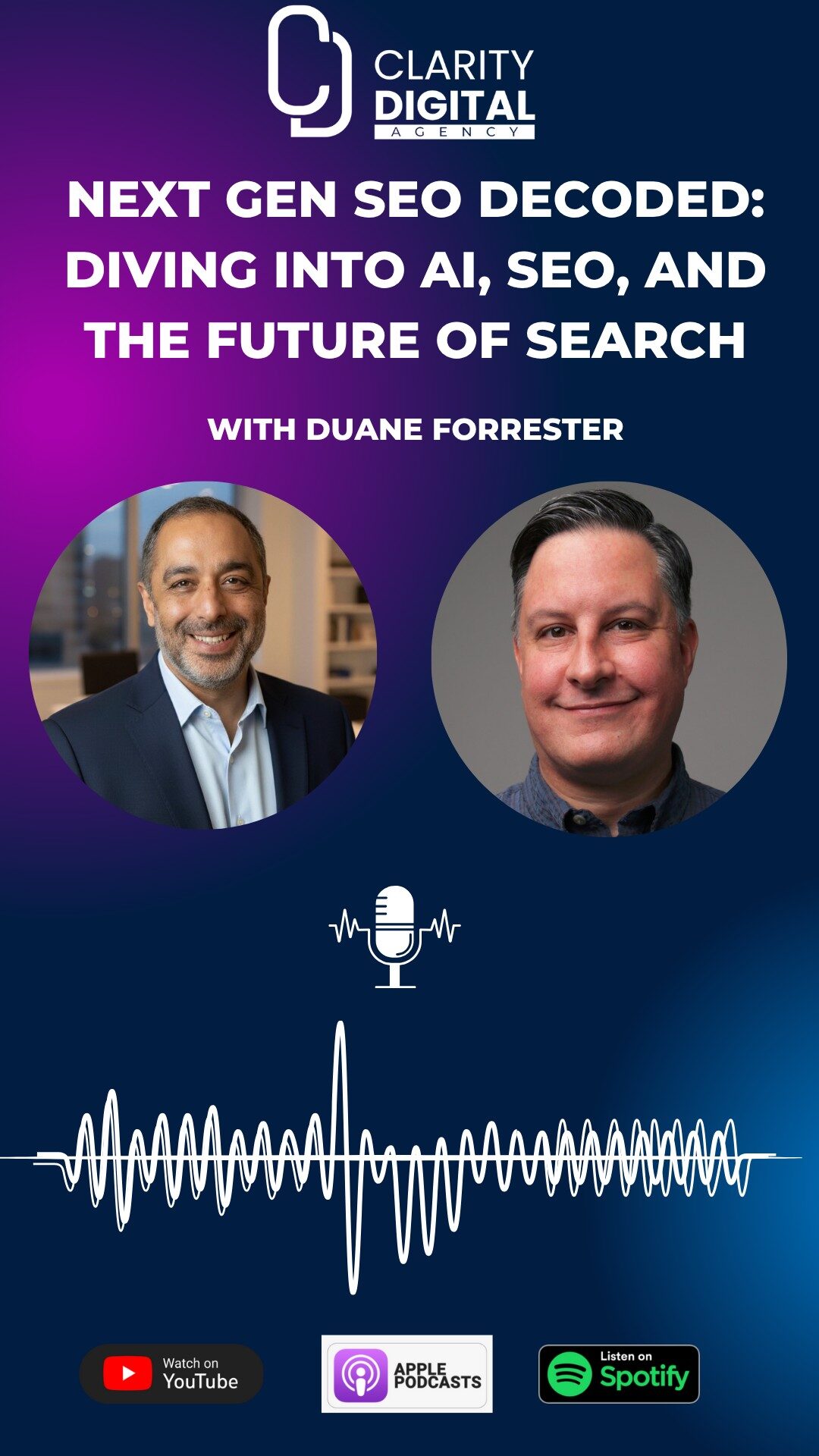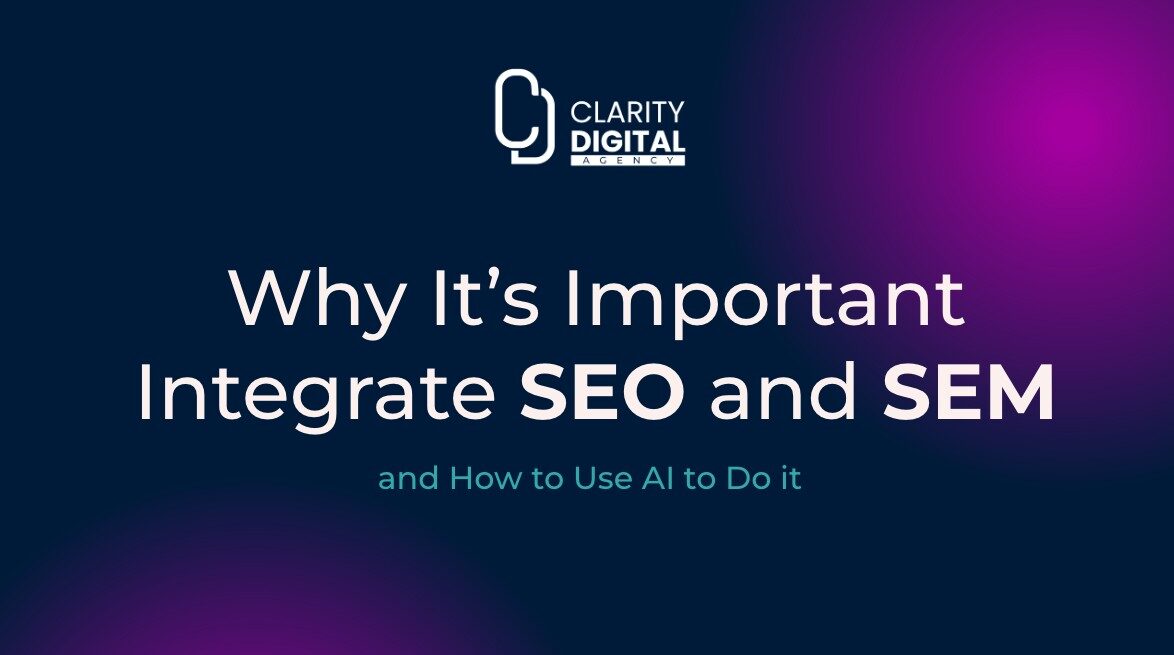AI Is Citing Your Brand. Are You Paying Attention?
Search has always been about visibility. For years, that meant ranking high in Google, winning clicks, and tracking impressions. But as AI assistants like ChatGPT, Perplexity, and Microsoft Copilot rise in adoption, we’re seeing a seismic shift in how information is found, cited, and acted upon.
These systems don’t just reference search results—they synthesize and present answers, pulling from multiple online sources. Your brand might already be cited in AI-generated answers, and if you’re not tracking it, you’re missing the earliest signals of digital trust.
This blog post explores what we at Clarity Digital call the “Answer Layer”—the surface of discovery powered by generative AI—and how marketers, SEOs, and digital leaders can begin measuring their brand’s influence within it.
The Evolution of Search: Why the Answer Layer Matters
Let’s start by recognizing that AI assistants have not replaced search engines—but they’ve added a new, important layer.
Traditional SEO still drives the majority of website traffic. Google processes over 3.5 billion searches per day. That’s not going away. But platforms like ChatGPT and Perplexity are quickly becoming embedded into devices, workflows, and decision-making processes.
This shift brings us to the concept of the Answer Layer:
The Answer Layer is the space where AI systems retrieve, synthesize, and deliver content directly to users—often without a click.
This means your content could be influencing users’ decisions before they even reach your site. And the kicker? You might never see it reflected in your analytics.
From SEO to GEO: Generative Engine Optimization
What do we call optimizing for this new surface? Some are calling it Generative Engine Optimization (GEO), and while the terminology is still emerging, the strategy is clear:
- You’re no longer optimizing just for rank—you’re optimizing to be retrieved.
- Ranking is about winning among known competitors. Retrieval is about being selected as raw material for an answer.
To succeed here, your content needs to be:
- Machine-readable (structured, well-formatted)
- Direct (answer-focused, not bloated)
- Trustworthy (with provenance signals like authorship, timestamps, citations)
These aren’t new SEO principles—they’re just being applied earlier in the user journey.
AI Mentions: The Visibility You Can’t See in Search Console
Let’s break down what visibility means in the context of generative AI. It’s not just about ranking anymore. We need to think in terms of:
- Mentions – Your brand/domain is cited in a generative answer.
- Impressions – That answer is seen by a user.
- Actions – A user clicks, expands, or copies content referencing your brand.
None of these are currently captured in standard tools like Google Search Console. That’s the gap.
Your content could be influencing a buyer, shaping an opinion, or establishing trust inside an AI assistant—and you’d never know unless you’re actively tracking it.
Manual Testing: How to Start Measuring AI Visibility
Until platforms offer native analytics (and some eventually will), the easiest way to begin is manual testing.
Step 1: Create a List of Prompts
Focus on queries your audience might use when researching your space. For example:
- “Best [industry] tools for beginners”
- “How does [your product/service] work?”
- “Companies offering [specific solution]”
Step 2: Run These Across Major AI Assistants
Use:
- ChatGPT Search (Paid users)
- Perplexity.ai
- Microsoft Copilot Search (in Edge or Windows)
Take screenshots. Record results in a spreadsheet.
Step 3: Log Key Data Points
- Date
- Prompt
- Assistant used
- Was your brand cited?
- Citation link
- Competitor mentions
- Notes on phrasing
Even if you run five prompts every week, you’ll begin to establish a trend baseline.
Tools to Track AI Mentions and Citations
For those ready to scale this tracking, here’s what you can do:
GA4 AI Traffic Tracking
- Use regex filters to isolate referrals from
perplexity.ai,chat.openai.com,claude.ai, etc. - Create a custom exploration report to view these as a separate traffic segment.
Automate Tracking with Zapier or n8n
- Schedule prompts.
- Capture outputs.
- Log results in Google Sheets.
This lets you move from anecdotal snapshots to data-backed insights.
Monitor “Direct” Traffic Patterns
Many AI users (especially on free plans) show up as direct traffic. If a spike hits a specific URL that matches your prompt testing, there’s a good chance it came from an assistant.
Understanding Competitive Citations
You shouldn’t just track yourself.
Every time you prompt an AI tool, note which competitors are also cited. Ask:
- What formats do they use? (Lists, FAQs, guides?)
- Are they using specific schema?
- Are they cited consistently across assistants?
This helps reveal what structures AI tools currently favor.
Pro tip: Pages with clear hierarchy (H1s, subheadings), minimal fluff, and embedded metadata tend to show up more reliably.
Impression Estimation: A Proxy for Exposure
Since AI tools don’t report impressions, we need to infer visibility:
- Use Google Trends to gauge search interest in your test queries.
- Track if your brand appears in assistants across similar prompts.
- Watch for consistency over time and platforms.
If you’re cited regularly for high-volume queries, there’s real exposure happening—even if no one clicks.
What Counts as an Action?
Actions are the hardest signal to track, but they do leave traces:
- Referrals from assistant platforms show in GA4.
- Copy-paste artifacts from AI content often appear in support tickets, social shares, or emails.
- Increased traffic to cited pages after AI platform mentions.
You may not know the exact query, but over time, patterns emerge.
Early Signals of Machine-Validated Authority (MVA)
AI platforms assign trust to content—but these signals are internal.
We can measure proxies for this Machine-Validated Authority:
- Are you cited across multiple assistants?
- Are your citations consistent over time?
- Do they link to canonical, cleanly structured URLs?
MVA is the next frontier of digital trust, and visibility here is a leading indicator.
The Legal and Ethical Layer
AI platforms are striking content licensing deals (e.g., OpenAI with the AP, Axel Springer). That affects what gets cited and how.
Publishers, brands, and creators are still navigating copyright and fair use boundaries. For now, the best you can do is:
- Ensure your content is properly attributed.
- Use clear authorship and licensing terms.
- Stay informed as legislation evolves.
This won’t stay gray forever, but in 2025, it’s still murky.
Reporting Upward: Show the Why, Not Just the What
Executives don’t want jargon. They want evidence.
Create a simple dashboard or presentation showing:
- Screenshots of your brand in ChatGPT, Perplexity, Copilot
- Timeline of citation frequency
- Growth in assistant referral traffic
Frame this as additive visibility. Not a replacement for SEO—an extension of it. A brand strength metric, not just a traffic play.
Use Case Prioritization: When GEO Matters Most
Not every brand needs to obsess over AI citations yet. Here’s where it matters most:
- You compete in thought leadership or educational content
- You’re targeting early-stage buyers doing research
- You want to establish topical authority in an emerging niche
For ecommerce or purely transactional sites? Traditional search is still where you should focus most resources.
Final Takeaway: Visibility Before Clicks Is the Next Frontier
The Answer Layer is where visibility happens before the click.
Measuring AI citations today gives you a head start in a world where assistants are part of the decision-making journey. The more your brand is referenced early, the more trust you build downstream.
Traditional SEO is still your foundation. But if you want to lead in 2026 and beyond, start treating AI citations as KPIs now.
Because what’s cited before the click is what gets trusted before the conversion.
Want to build your AI visibility tracking framework?
Reach out to the Clarity Digital team—we’ll help you create a customized, measurable approach for your industry.
Stay visible. Stay cited. Stay trusted.





